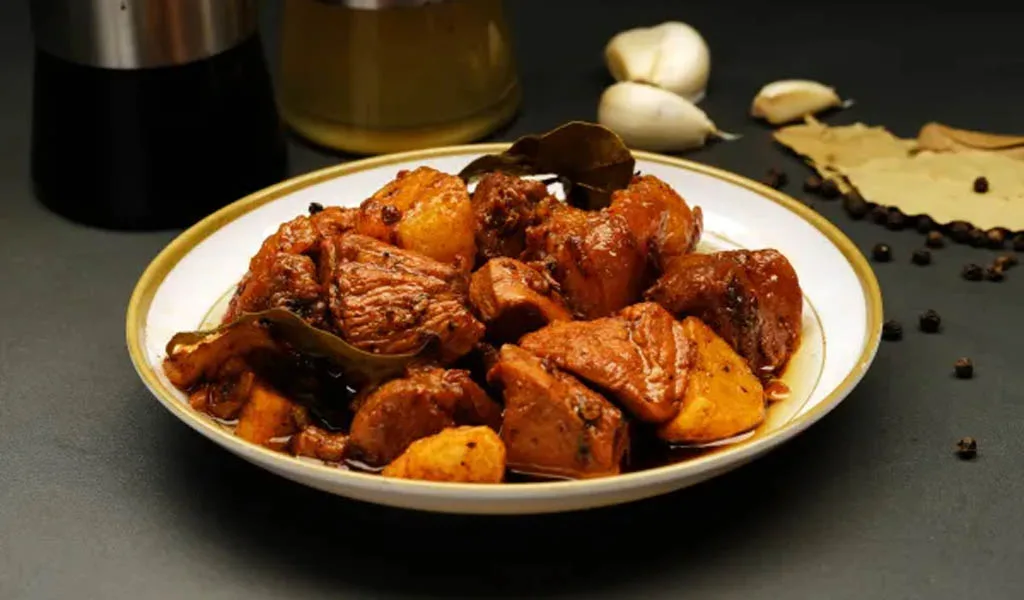Diving into the Adobo-verse – A Flavorful Philippine Adobo Variations
Adobo, the quintessential Filipino dish, is a celebration of flavor, culture, and history on a plate. It’s a dish that carries the soul of the Philippines, uniting regions with its comforting taste. Yet, what makes Adobo truly fascinating is its incredible versatility.
No two adobos are the same, and every region, family, and even individual cook brings their twist to this beloved dish. As we embark on this delicious journey through the adobo-verse, prepare your taste buds for a delightful exploration of the 10 must-try Philippine adobo variations that showcase the richness and diversity of Filipino cuisine.
1. Classic Chicken and Pork Adobo
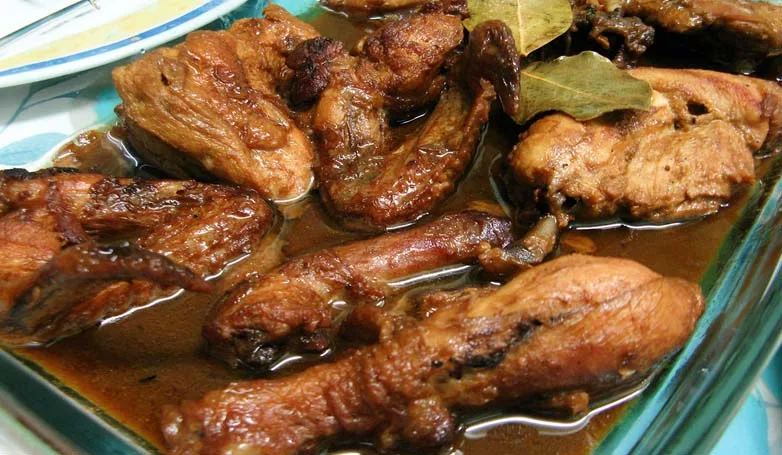
This version is often considered the gold standard of adobo. The use of both chicken and pork offers a delightful contrast in textures and flavors, enhanced by the foundational adobo sauce made from soy sauce, vinegar, garlic, bay leaves, and pepper. It’s a harmonious blend that yields a dish rich in umami and tartness, with a subtle hint of sweetness often from a touch of sugar or the natural sugars in the soy sauce caramelizing.
2. Adobong Puti (White Adobo)

A throwback to the pre-colonial days of the Philippines, Adobong Puti is the ‘albino’ sibling in the adobo family. Its sauce is devoid of soy sauce, relying instead on vinegar, salt, and garlic for its bold flavors. This variant showcases the adobo’s versatility and its ability to adapt to the simplest of ingredients while still offering a rich, tangy taste.
3. Adobo sa Gata (Adobo with Coconut Milk)
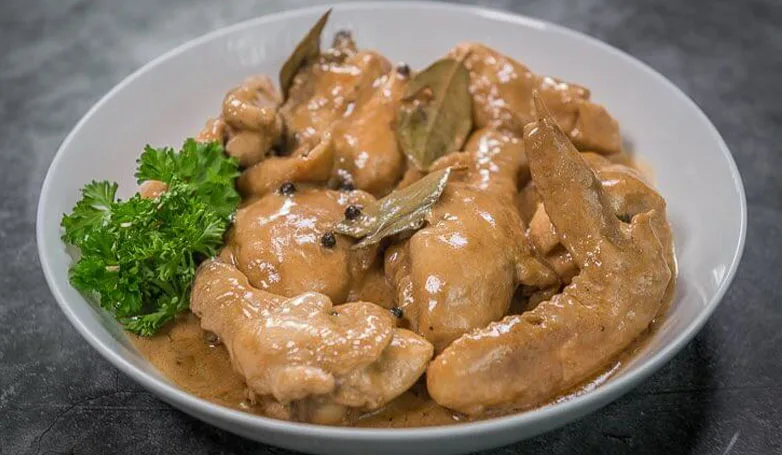
A creamy, luxurious twist on the classic, Adobo sa Gata infuses the traditional adobo with the rich sweetness of coconut milk. This not only mellows the vinegar’s sharpness but also adds an irresistible creaminess to the dish, making it a hit in regions where coconut is a staple ingredient. The coconut milk also works beautifully with the flavors of bay leaf and garlic, creating a moreish dish that’s hard to resist.
4. Adobong Dilaw (Turmeric Adobo)

Colorful and healthful, Adobong Dilaw gets its vibrant yellow color from turmeric, a spice known for its numerous health benefits, including anti-inflammatory properties. This version swaps the soy sauce for turmeric, giving the dish an earthy base that pairs wonderfully with vinegar’s acidity. It’s a beautiful fusion of flavors and colors that brightens both the plate and the palate.
5. Pork Adobo with Pineapple
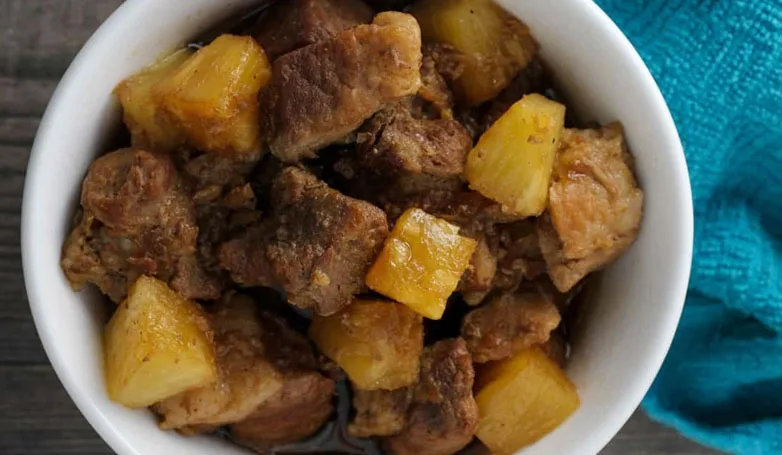
Introducing sweetness to the savory and tangy profile of adobo, chunks of pineapple are added to the pot, creating a unique version that teases the taste buds with its sweet-sour dynamics. The pineapple not only tenderizes the pork further but also infuses the dish with a fruity zest, exemplifying the Filipino penchant for mixing sweet and savory flavors.
6. Adobong Kangkong (Water Spinach Adobo)

A deliciously green take on the traditional adobo, Adobong Kangkong uses water spinach as the star ingredient. The leafy vegetable soaks up the adobo sauce, becoming a carrier for the dish’s quintessential flavors. It’s a lighter, vegetarian-friendly version that doesn’t skimp on taste, proving that adobo truly can embrace a wide array of ingredients.
7. Adobong Manok sa Atsuete (Annatto Chicken Adobo)

Annatto seeds lend a bright orange-red hue and a subtle earthiness to this chicken adobo variation, enhancing the visual appeal and adding a layer of flavor that complements the chicken and the vinegar-soy base. Adobong Manok sa Atsuete is a testament to how simple ingredients can significantly impact a dish’s overall flavor and presentation.
8. Adobong Kambing (Goat Adobo)

Reserved for special occasions in certain regions, Adobong Kambing features tender, slow-cooked goat meat. The robust flavors of goat are a perfect match for the powerful adobo marinade, resulting in a dish that’s both hearty and flavorful. This version is a celebration of the Filipino love for communal feasts and the shared joy of indulging in good food.
9. Adobong Pusit (Squid Adobo)
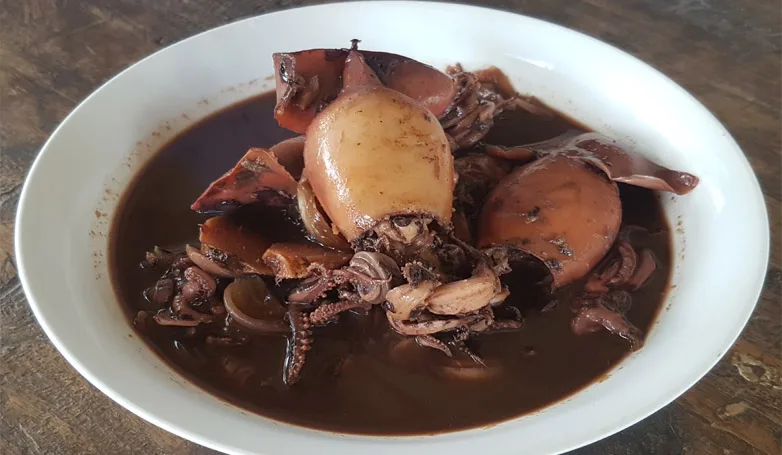
Seafood lovers will revel in Adobong Pusit, where small squids are cooked in their ink, adding depth, color, and a unique umami flavor to the dish. The ink not only tints the sauce a dramatic shade of black but also imparts a distinctive briny taste, making this adobo variation a memorable foray into the Philippines’ rich seafood culinary traditions.
10. Adobong Labong (Bamboo Shoots Adobo)

Focusing on the tender textures and delicate flavors of bamboo shoots, Adobong Labong is a vegetarian adobo that showcases the adaptability of the dish to different textures and tastes. Bamboo shoots, with their slight crunch and mild taste, become the perfect canvas for the adobo sauce, creating a dish that’s both innovative and deeply rooted in Filipino culinary culture.
The Endless Adventure of Filipino Adobo
Philippine adobo stands as a testament to the culinary creativity, cultural diversity, and historical richness of the Filipino people. Each variation tells a unique story, invites a deeper understanding of regional tastes, and offers a multitude of sensory delights. As we conclude this gastronomic expedition through the adobo-verse, remember that the journey doesn’t end here.
The beauty of adobo lies in its versatility, inviting you to explore, experiment, and add your twist to this beloved dish. So, whether you’re cooking it for the first time or the hundredth, let your creativity flow, and your taste buds lead the way. Welcome to the endless adventure that is Filipino adobo. Must-try Mimaropa food delicacies.

